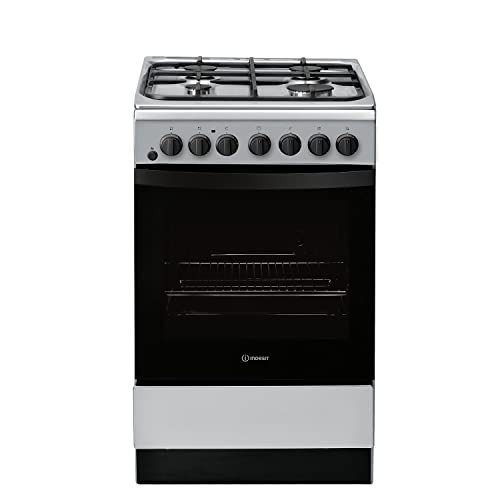10 Of The Top Mobile Apps To Oven Hobs
The Essential Guide to Oven Hobs: Selecting the Right One for Your Kitchen
When it concerns home cooking, few home appliances are as essential as the oven hob. This versatile piece of equipment is vital for a range of cooking approaches— boiling, frying, simmering, and sautéing. Given the myriad of choices available on the marketplace, selecting the perfect oven hob for one's kitchen can be daunting. This article intends to offer a thorough look at oven hobs, discussing their types, functionalities, benefits, downsides, and crucial considerations when purchasing one.
Understanding Oven Hobs
Oven hobs, frequently called cooktops, are flat cooking platforms that feature burners or heating aspects. They can be integrated with an oven or stand-alone. The option of an oven hob can significantly affect cooking performance and benefit.
Kinds Of Oven Hobs
Oven hobs can be found in different types, each with unique features. Below are the most common types offered:
Type
Description
Benefits
Drawbacks
Gas Hobs
Uses gas or lp
Instant heat and exact temperature level control; works well with all cookware
Needs a gas connection; less energy-efficient than electric
Electric Hobs
Usage electric coils or convected heat
Easy to clean; constant heat distribution
Slower to heat up; can be less responsive than gas
Induction Hobs
Makes use of electromagnetic fields to heat pots and pans directly
Quick cooking; energy-efficient; simple to clean
Needs suitable cookware; typically more costly
Ceramic Hobs
Flat glass-ceramic surface with radiant heat
Visually pleasing; simple to tidy
Can be prone to scratching; slower to heat than induction
Key Features of Oven Hobs
When selecting an oven hob, a number of features ought to be taken into consideration:
Size & & Configuration: Available in different sizes, oven hobs can accommodate several pots and pans. Basic alternatives are typically 30, 36, or 48 inches broad.
Power Output: Look for hobs with differing power levels for different cooking processes. High-powered burners are excellent for boiling, while lower-power ones can be utilized for simmering.
Control Types: Choose between knob controls and touch controls. Knobs supply tactile feedback, while touch controls use sleek styles and extra functionalities.
Safety Features: Options like automated shut-off, child locks, and flame failure gadgets are crucial for avoiding accidents.
Alleviate of Cleaning: Choose models with smooth surface areas or removable parts for easy maintenance.
Benefits and Disadvantages
Comprehending the pros and cons of various oven hobs can assist in making a notified decision.
Benefits
- Versatility: Suitable for numerous cooking techniques, from boiling to frying.
- Speed: Many hobs heat rapidly, particularly induction models.
- Energy Efficiency: Some alternatives, like induction hobs, can minimize energy usage compared to conventional methods.
Disadvantages
- Cost: High-end designs, particularly induction hobs, can be expensive.
- Setup: Gas hobs need professional setup and a gas supply, which may sustain additional expenses.
- Compatibility: Not all cookware deals with induction hobs, requiring additional purchases.
Buying Considerations
When selecting an oven hob, consider the following aspects:
Cooking Style: Assess how frequently and what sort of cooking you do to identify the best hob type.
Kitchen Layout: Measure your kitchen space to guarantee the hob fits and matches other appliances.
Budget: Determine how much you want to spend. Consider installation and the cost of any needed cookware.
Energy Source: Evaluate the schedule of gas or the electrical capacity of your kitchen to choose in between gas and electric alternatives.
Frequently Asked Questions About Oven Hobs
Q1: What is the distinction in between a cooktop and an oven hob?A cooktop and an oven hob usually describe the exact same device. However,“cooktop “is a broader term that consists of both standalone hobs and integrated units with ovens. Q2: Can I use any cookware on an induction
hob?No, induction hobs require ferrous( magnetic)cookware
to work. Cookware made from material like stainless steel or cast iron appropriates, while aluminum and copper without magnetic properties are not. Q3: How do I tidy my oven hob properly?Cleaning approaches depend on the kind of hob.
Usually, a wet cloth and moderate cleaning agent work for glass-ceramic surface areas, while a specific hob cleaner is ideal for induction. Gas hobs require taking apart burners for extensive cleansing. Q4: Are induction hobs safe for cooking?Yes, induction hobs are generally much safer than gas hobs as they do not produce an open flame,and the surface cools off rapidly. Most models also include kid security locks. Q5: How typically must I change my oven hob?The life-span of an oven hob differs based on the type and usage. Normally, Hobs Sale last around 10 to 15 years.****
Routine upkeep can assist extend this duration. Choosing the best oven hob for your home can significantly enhance your cooking experience. With a comprehensive understanding of the types, functions, benefits, and considerations, anybody can make an educated option. From the high heat of gas to the effectiveness of induction, there is a hob suited to every culinary requirement. Ultimately, the ideal oven hob can transform cooking from an ordinary task into an art type, making it possible for culinary enthusiasts to create scrumptious meals with ease. 